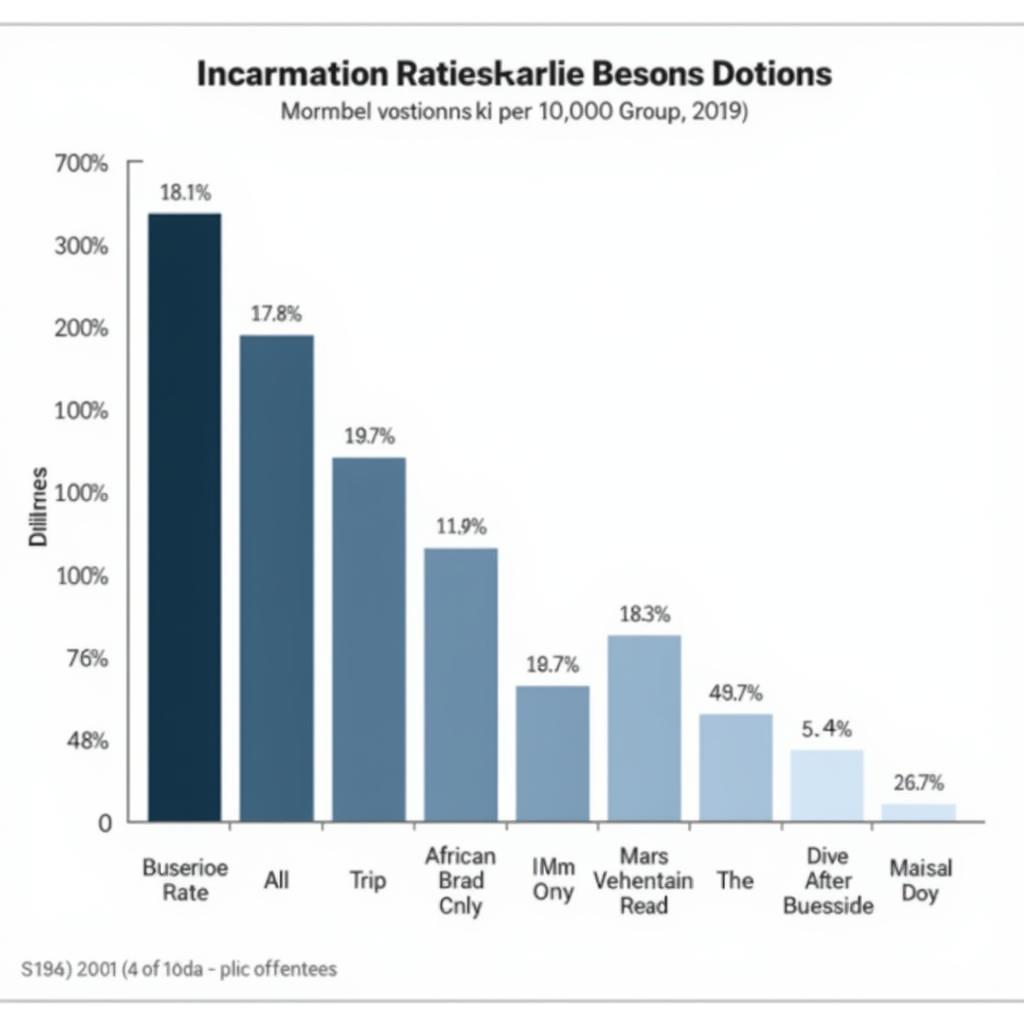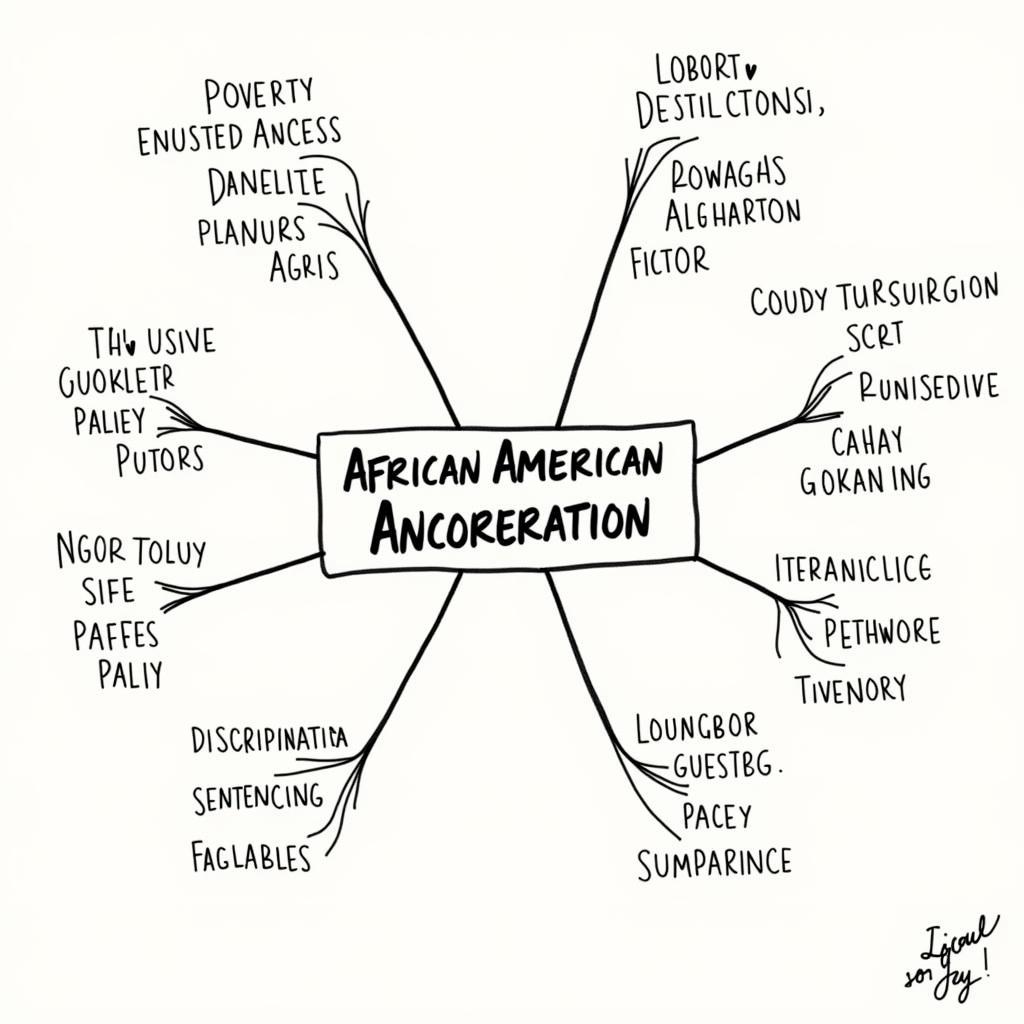African American Incarceration Statistics 2019: A Deep Dive
African American incarceration statistics for 2019 paint a complex picture of racial disparities within the US criminal justice system. Understanding these statistics is crucial for addressing systemic inequalities and promoting a more just society. This article delves into the data, exploring the underlying causes and potential solutions.
Unpacking the 2019 Data: African American Incarceration Rates
The 2019 data reveals stark disparities in incarceration rates between African Americans and other racial groups. While African Americans make up approximately 13% of the US population, they represented a disproportionately higher percentage of the incarcerated population. This overrepresentation is not a new phenomenon but rather a persistent issue rooted in historical and ongoing systemic biases. Analyzing specific data points, such as incarceration rates per 100,000 residents, provides a clearer understanding of the scope of this disparity.
The numbers highlight the urgent need for reform and underscore the importance of understanding the multifaceted factors contributing to these disparities. These factors include socioeconomic inequalities, biased policing practices, and discriminatory sentencing guidelines. Examining these factors is essential for developing effective strategies to address the root causes of racial disparities in incarceration.
 African American Incarceration Rates in 2019
African American Incarceration Rates in 2019
What Factors Contribute to These Disparities?
Several factors intertwine to create the disparities reflected in the African American incarceration statistics of 2019. Socioeconomic disadvantages, such as limited access to quality education, employment opportunities, and adequate healthcare, play a significant role. These disadvantages can lead to increased involvement in criminal activity, particularly in communities lacking resources and support.
Moreover, biased policing practices, including racial profiling and discriminatory enforcement of laws, contribute to higher arrest rates among African Americans. These practices perpetuate a cycle of distrust between law enforcement and communities of color.
Additionally, discriminatory sentencing guidelines and mandatory minimums for certain offenses disproportionately impact African Americans. These policies often result in harsher sentences for similar crimes compared to other racial groups.
 Factors Contributing to African American Incarceration
Factors Contributing to African American Incarceration
How Does Socioeconomic Status Impact Incarceration Rates?
Socioeconomic status plays a crucial role in incarceration rates, as individuals living in poverty often face limited opportunities and increased exposure to crime. This complex relationship necessitates a comprehensive approach to addressing both poverty and crime.
“Addressing socioeconomic disparities is crucial to achieving meaningful change in incarceration rates,” says Dr. Anika Jones, a sociologist specializing in criminal justice reform. “Providing adequate resources and opportunities is key to breaking the cycle of poverty and reducing crime.”
Beyond the Numbers: The Human Cost of Incarceration
Beyond the statistics, it’s vital to recognize the devastating human impact of incarceration on individuals, families, and communities. The long-term consequences of a criminal record can make it incredibly difficult for formerly incarcerated individuals to secure employment, housing, and education, creating further barriers to reintegration into society.
What are the Long-Term Effects of Incarceration on Communities?
The ripple effects of incarceration extend throughout entire communities, contributing to cycles of poverty and instability. Children with incarcerated parents face increased risks of emotional and behavioral challenges, and communities with high incarceration rates often experience diminished social cohesion and economic growth.
“The impact of incarceration goes far beyond the individual,” notes Dr. Kwame Asante, a criminologist and advocate for criminal justice reform. “It creates a web of consequences that affects families, communities, and future generations.”
 The Human Cost of African American Incarceration
The Human Cost of African American Incarceration
Conclusion: A Path Forward
The African American incarceration statistics from 2019 underscore the urgent need for criminal justice reform. Addressing systemic racism, socioeconomic disparities, and biased practices within the justice system is essential for creating a more equitable future. By investing in communities, promoting education and employment opportunities, and advocating for fair and just policies, we can work towards a society where everyone has the opportunity to thrive. African American incarceration statistics demand our attention and action.
FAQ
- What were the primary drivers of African American incarceration in 2019?
- How do socioeconomic factors influence these statistics?
- What are some potential solutions to address these disparities?
- How do these statistics compare to other racial groups?
- What are the long-term impacts of incarceration on individuals and communities?
- What role does racial bias play in the criminal justice system?
- How can we advocate for meaningful criminal justice reform?
Related Questions and Articles:
- Mass Incarceration in America
- The War on Drugs and its Impact on African American Communities
- Criminal Justice Reform Initiatives
Need support? Contact us 24/7: Phone: +255768904061, Email: kaka.mag@gmail.com, or visit us at Mbarali DC Mawindi, Kangaga, Tanzania.
